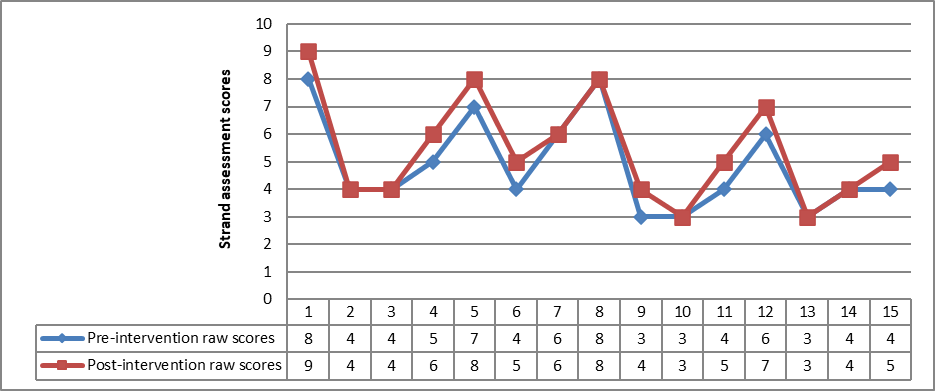Table of contents:
A. Study findings related to the first hypothesis
- The study revealed statistically significant differences at &=0.01 significance level between the pre- and post-assessment scores attained by the students in the experimental group in the overall level of independence skills, in favour of the post-assessment scores.
- The study showed statistically significant differences between pre- and post-assessment scores attained by students in the strands of self-care, domestic skills, first aid, telephone use, shopping, personal finances, and movement and orientation, but not in the fifth strand, security and safety. The skills under the shopping strand improved significantly by 600 per cent after introducing the functional curriculum.
Figure 1. Pre- and post-assessment scores of experimental group members in the self-care strand
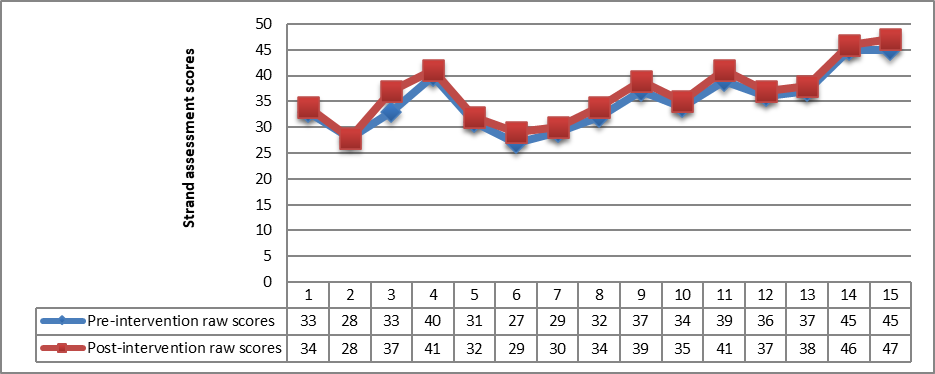
Source: Author.
The graph in figure 1 shows a slight improvement in the performance of the study sample students in the self-care strand, except for student 2, who did not show any improvement in this strand after the intervention period using the functional curriculum.
Figure 2. Pre- and post-assessment scores of experimental group members in the domestic skills strand
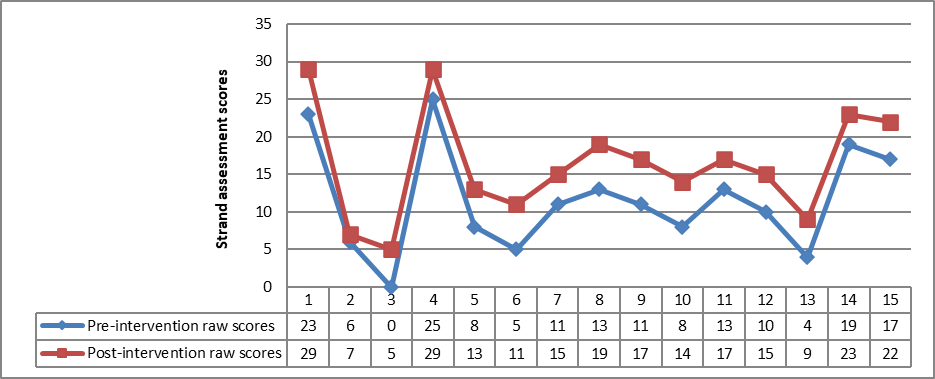
Source: Author.
The graph in figure 2 shows an improvement in the performance of all students in the domestic skills strand.
Figure 3. Pre- and post-assessment scores of experimental group members in the first-aid strand
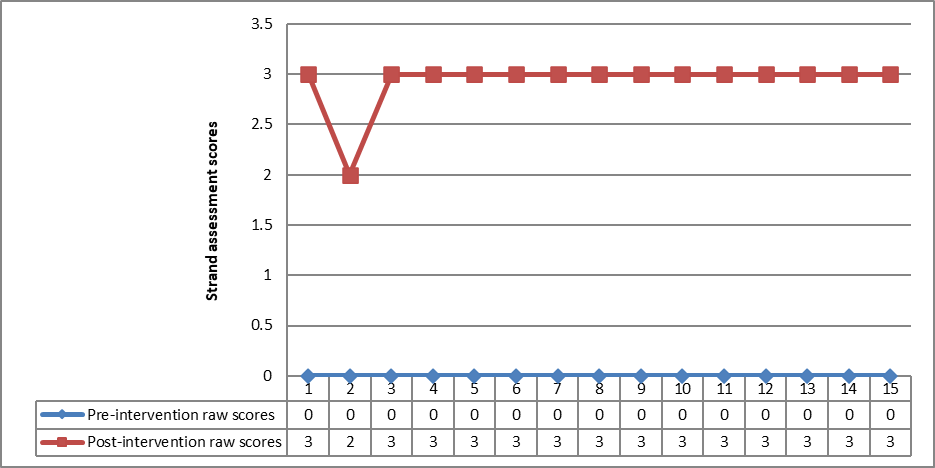
Source: Author.
The graph in figure 3 shows a significant improvement in the performance of all students. It is noteworthy that this strand is completely new for them. They had not learned any first-aid skills before the intervention period.
Figure 4. Pre- and post-assessment scores of experimental group members in the telephone use strand
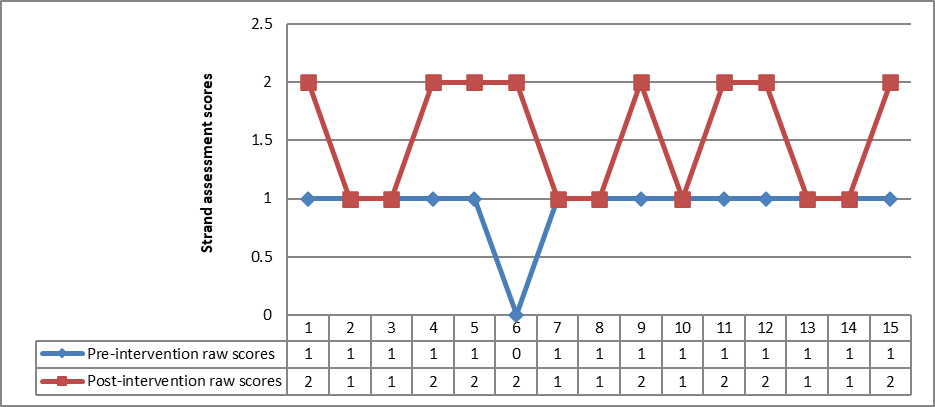
Source: Author.
The graph in figure 4 reflects a varied performance by students in the telephone use strand. Students 1, 4, 5, 6, 9, 11, 12 and 15 showed an improvement, while students 2, 3, 7, 8, 10, 13 and 14 did not. This disparity is due to the fact that students who performed better had received training on telephone use objectives, while the group that did not improve had not. The fact that some students received training while others did not is because the curriculum adopted in this study is founded on applying an individualized education programme for each student, based on her needs and abilities. Therefore, students who could have a telephone conversation were trained, while students with severe speech problems that completely prevented them from using the phone were not. However, they were allowed to move forward even without receiving training on the goal.
Figure 5. Pre- and post-assessment scores of experimental group members in the security and safety strand
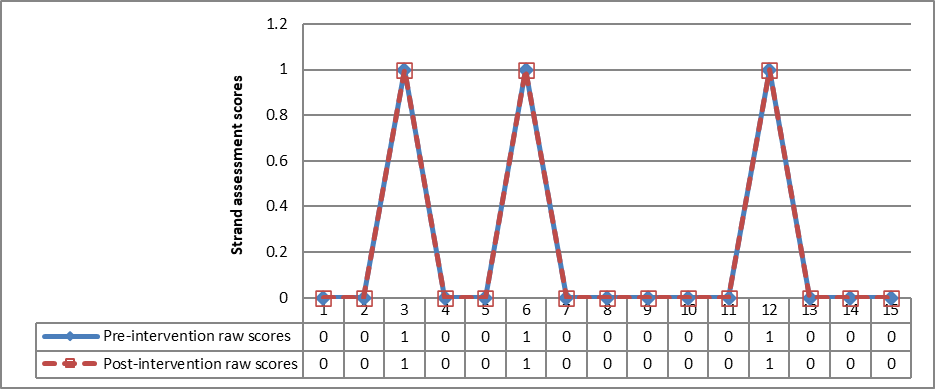
Source: Author.
The graph in figure 5 shows no change in students' performance in the security and safety strand, and there are no significant differences between the score averages before and after the programme implementation. This is due to the fact that this strand was not included in the students' individualized programmes that were based on the current performance level of each student, for the following reasons:
- Training depends on achieving several goals beforehand that the students had not yet mastered. For example, the goal of calling emergency numbers is linked to students knowing the numbers in Arabic or English, a skill the students did not have. Training on this skill may face criticism due to the students' inability to perform part of the task, which is dialling the phone number, similar to the criticism received by Drysdale et al. (2008) when students were trained on the telephone use skill before they had acquired the skill of knowing numbers, which prevented them from mastering the telephone use skill completely.
- Training on some goals takes a long time exceeding the study period, given its pertinence to other skills, such as personal safety skills, especially those related to recognizing strangers, proper conduct in the event of getting lost in a public place, and other similar goals.
- The students' mothers opted against choosing a goal under this strand for several reasons:
- The students were trained on first-aid skills, which the mothers considered to be an important and sufficient part of security and safety skills.
- The mothers did not want to train their daughters to recognize hazardous materials at home and follow pedestrian safety rules, for fear of putting them at risk if they tried to experience the training unattended.
- Mothers considered that the students had a greater need for housekeeping and shopping skills at the time, preferring to prioritize the said skills.
Browder et al. (2004) justify this selective process by considering that the functional curriculum constitutes a framework within which the student's priority skills can be selected.
Figure 6. Pre- and post-assessment scores of experimental group members in the shopping strand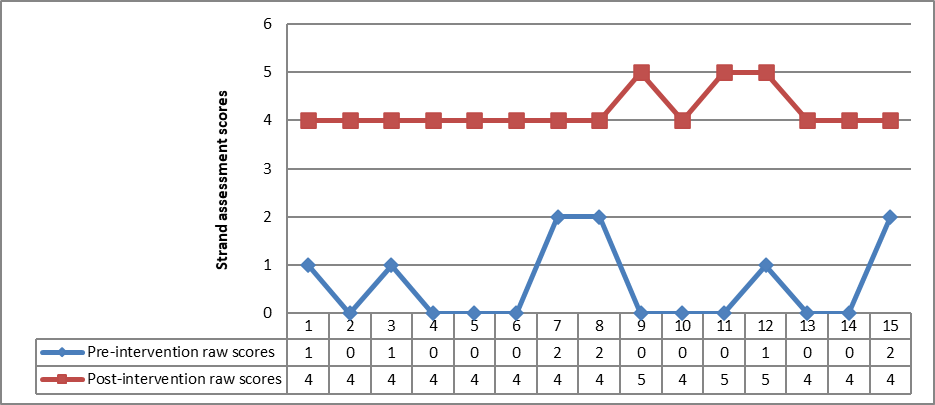
Source: Author.
Figure 7. Pre- and post-assessment scores of experimental group members in the personal finances strand
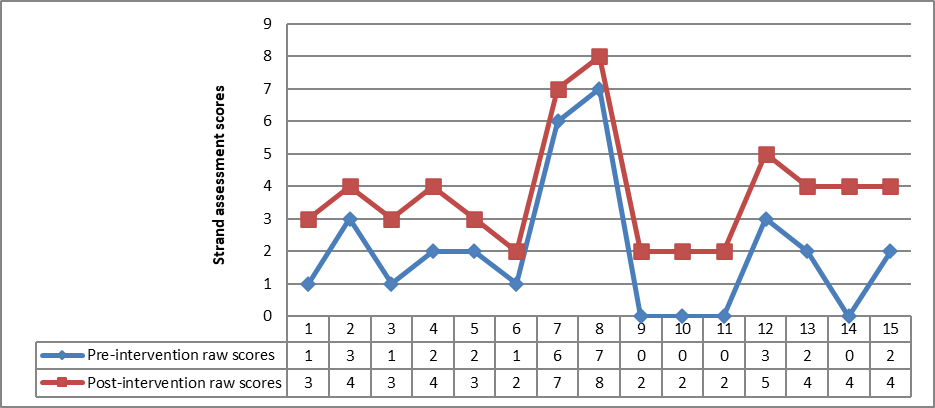
Source: Author.
The graphs in figures 6 and 7 indicate a clear improvement in the students' performance in the shopping and personal finances strands after receiving the pertinent training.
Figure 8. Pre- and post-assessment scores of experimental group members in the orientation and movement in society strand
Source: Author.
The graph in figure 8 shows an improvement in the performance of students 1, 4, 5, 6, 9, 11, 12 and 15, whereas the performance of students 2, 3, 7, 8, 10, 13 and 14 showed no change. The students who showed improvement had received training on the objectives related to this strand, given that the curriculum adopted in this study was founded on applying an individualized education programme for each student, based on her needs and abilities. In this strand, the training included practicing mentioning the name of the neighbourhood in which the student lives and linking it to the skill of conducting a telephone conversation. The students who showed a need for this goal and the ability to achieve it received the training, whereas students with deep speech problems that prevented them from achieving that goal did not. Therefore, the outputs of students in the experimental group were different in this strand.
Figure 9. Pre- and post-assessment overall scores of experimental group members in the independence domain
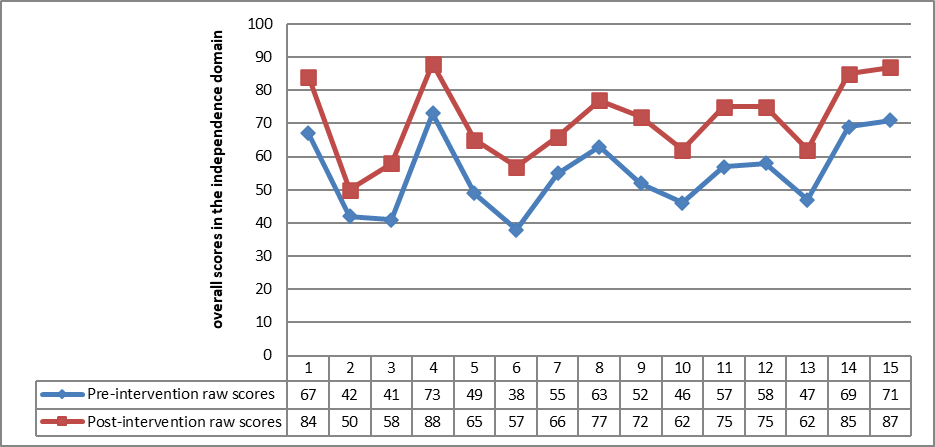
Source: Author.
The graph in figure 9 shows differences between the average overall scores attained by the experimental group members in the pre- and post-assessments in the independent domain, in favour of the post-assessment scores. Moreover, the students' performance recorded statistically significant differences between the pre- and post-assessments in strands 1, 2, 3, 4, 6, 7 and 8, while not in the fifth strand (security and safety). These results indicate a noticeable improvement in the performance of students in the experimental sample after teaching them the functional curriculum. This proves the effectiveness of the functional curriculum in helping students acquire independence skills, especially in the first, second, seventh, and eighth strands, as results show a statistically significant correlation between the difference in the experimental group's pre- and post-assessment scores on the one hand, and applying the functional curriculum on the other.
